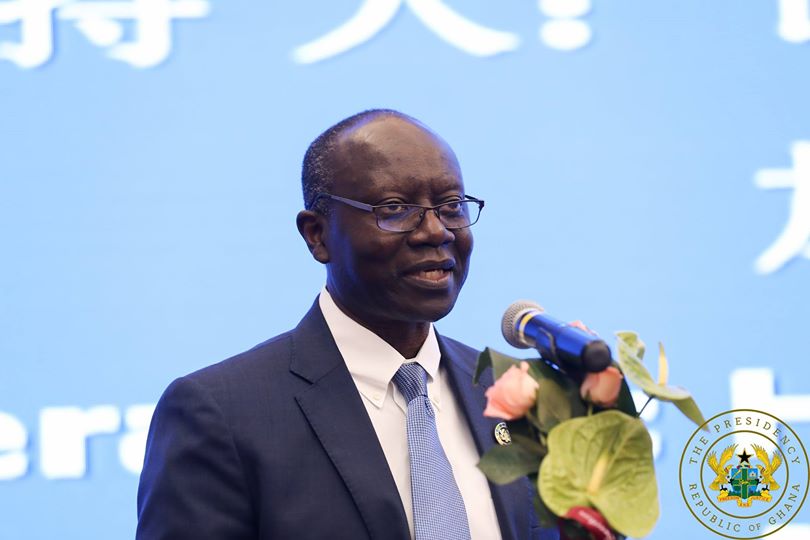Policy Think tank, IMANI Africa has accused the Electoral Commission of Ghana of untiringly peddling falsehood to justify its decision to compile a new register of voters ahead of the 2020 general elections.
The Electoral Commission of Ghana had said without a new register and a new biometric system, the upcoming 7 December 2020 elections could be compromised, and as such the commission intends using GHS390 million for the registration exercise.
Imani Africa has said the Electoral Commission’s claims that it will “cost just $56 million to procure a new system while the cost of refreshing and maintaining the existing one would cost $74 million are dangerous untruths”.
If, despite all the explanations, you are still confused about IMANI’s revelations of the EC’s tender rigging activities in the matter of the biometric system procurement, here is the short and quick version (see also the graphical timeline below).
1. We say that the EC from the outset wanted Thales (and its local partner, Rhema) to win the tender. The “international competitive tender” was thus anything but “competitive”. The outcome had been set in advance.
2. Our evidence is based on a logical deduction from the chronological sequence of events below. We say that no rational person after reviewing the sequence of events can conclude any other way.
3. After the original Technical Evaluation Panel finished its work on the shortlist of five companies and presented the recommendations to the EC’s management (essentially, the Chairperson and two deputies), the Chairperson wrote back on 18th December 2019 asking that the two most experienced companies in biometric elections technology, who also posed the greatest threat to Thales, be dropped and a new report confirming same be delivered on the next day. The 2 companies are Idemia and Smartmatic. And that Thales and the two least experienced companies, Miru and Buck Press, be advanced to the financial evaluation phase.
4. When this was not done, the EC management, having failed to prevail on the Chairman of the Technical Evaluation Panel, still went ahead and modified the score tallies to achieve their preferred outcome. This outcome was communicated to the Central Tender Review Committee (CTRC) and the Public Procurement Authority (PPA) as the final outcome of the technical evaluation phase for rubber-stamping. The EC then went ahead and opened the financial offers.
5. The Chairman of the Technical Evaluation Panel thus wrote to the CTRC and the PPA disowning the report and dissociating himself from its claims.
6. The EC Chairs responded by dissolving the technical panel on 10th January 2020 and set up a rubberstamp new committee on the same day. At its first sitting on 13th January, this committee eliminated Idemia from further consideration.
7. Idemia makes the famous Morpho tablets, the most cost-competitive BVR solution we have been able to find after a pricing survey. Idemia traces its lineage to Sagem, the company that won Ghana’s first biometric ID card tender under President Kufuor.
8. The rubberstamp Technical Panel then went ahead to make the now famous “no adverse risk sighted against Thales” claim and used trumped-up charges in the Philippines to discredit Smartmatic. By failing to deduct marks in section 5 against Thales for all the reputational issues they’ve faced around the world, a feat only achievable by dropping due diligence, background searches, and reputational risk completely from the evaluation, they managed to score Thales (on page 43 of the final report) 104 (though their marks added up to 98) and thereby successfully eliminated Smartmatic, which had bid at a lower price than Thales. This is despite Smartmatic having 21 successful major similar deployments to their credit compared with Thales’ 7 (or, for the purpose of this tender evaluation, just 4). And despite Thales having been blacklisted in the past by the World Bank, having been indicted for bribing Government officials in South Africa, and through its Gemalto unit facing suits by the government of Estonia for delivering malfunctioning technology. The Central Tender Review Committee used a few hours to rubberstamp this whole mess on 24th January 2020.
9. Upon exposing these sham arrangements, IMANI has been accused of championing the interests of Smartmatic. Yet even before the tender had been concluded, IMANI had expressed vehement opposition to the whole process. How can IMANI be promoting a company and at the same time working from the outset to block a tender from which it stood to earn $69 million if it won?
10. How does this connect with our main campaign issue against the buying of a fresh biometric system? Simple. A. If the EC can’t even run a tender professionally then it will have even more difficulty implementing a trustworthy and reliable technology. B. If the EC is willing to bend every rule to see a particular company win then its motives cannot be the deployment of the best and efficient system. Both goes to support our argument all along that the EC’s intentions have little to do with the obsolescence of the existing system, as the existing system is *NOT OBSOLETE*.
11. Some apologists say that IMANI should go to court then. IMANI is not a law enforcement agency. There are at least 7 major state institutions empowered and resourced to address the abuses we have exposed, including by going to court. Why should IMANI be the one using its meager resources to go to court? IMANI, by instead using its limited resources to enlighten the public, has discharged its mandate as spelt out in its name: “Policy & Education”. It is up to others in the public sphere to also contribute to holding powerful actors in society accountable.




















